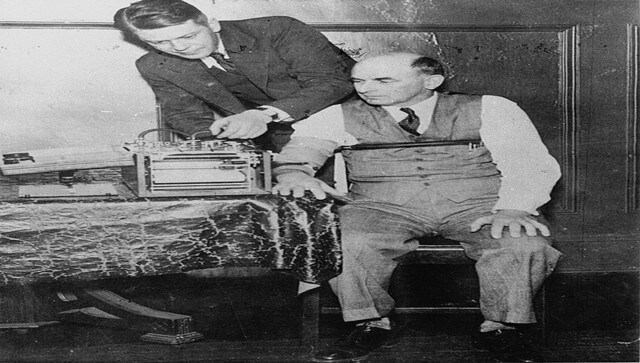On Monday, the Delhi Police filed an application to conduct a polygraph test on Aftab Poonawala. Poonawall has been accused of the brutal murder of his live-in partner Shraddha Walkar six months ago. Metropolitan Magistrate Aviral Shukla referred the matter to Judge Vijayshree Rathore, who had earlier heard the police application on Poonawala’s narco analysis test, which is yet to be conducted. The police in the application told the judge Poonawala is providing incorrect information and misleading police, a court source said. But what is the polygraph, more popularly known as the lie detector test? And how accurate is it? Let’s take a closer look: First, let’s understand the difference between a narco-analysis test and a polygraph. A narco-analysis test is a controlled intravenous administration of hypnotic medication on a suspect to get information that would usually not be revealed in the normal state. Also read: Narcoanalysis test for Aftab Poonawala: What is it and how can it help in Shraddha Walkar’s murder case? A polygraph itself means ‘many writings’, as per C_BS._ It refers to the many physiological activities being recorded during a test. According to Psychology Today, the first polygraph was developed in 1921 when John Larson combined previously developed methods of measuring respiration, heart rate, and blood pressure that had individually shown promise as a measure of lying. How does it work? A polygraph records several physiological indices such as blood pressure, respiratory rate, sweat and pulse when a suspect is asked a series of questions.
The suspect can only answer ‘yes’ or ‘no’.
As per Indian Express, instruments such as cardio-cuffs or sensitive electrodes are attached to the subject taking the test. As per CBS, rubber tubes are placed over a subject’s chest and abdominal area to measure respiratory activity; small metal plates attached to the fingers record sweat gland activity, and a blood pressure cuff or similar instrument will monitor the cardiovascular system. The theory behind the test is that someone lying would physiologically respond in a different way than someone telling the truth. How reliable is it? That depends on whom you ask. As per Psychology Today, the American Polygraph Association itself puts the accuracy of polygraphs at 87 per cent. Frank Horvath of the American Polygraph Association told CBS, “Proponents will say the test is about 90 percent accurate. Critics will say it’s about 70 percent accurate." However, the US federal government in 2003, seeking an independent evaluation, asked the National Academy of Sciences to conduct a full examination of the accuracy of the test. The final result was closer to 75 per cent, as per Psychology Today. Which is still far better than the average human being’s ability to tell lies from truth, which research shows is at 55 per cent, as per The Conversation. But that means it’s far from foolproof. [caption id=“attachment_11669861” align=“alignnone” width=“640”] American inventor Leonarde Keeler testing his version of the polygraph. Wikimedia commons[/caption] “It does not measure deception, which is the core problem,” professor Aldert Vrij, who has written extensively on the subject, told BBC. “The idea is that liars will show increased arousal when answering the key questions, whereas truth tellers will not. But there is no sound theory to back this up.” “The polygraph, like any other lie detection technique, measures an indirect effect of lying,” Dr Sophie van der Zee, an expert in forensic psychology who has researched deception extensively, told BBC. “There’s no human equivalent of Pinocchio’s nose,” she says. “But lying can increase stress… and with lie detection techniques you can measure the behavioural and physiological changes that occur when you feel stress.” “People being interviewed with a polygraph are likely to feel stressed. So whilst the polygraph is quite good at identifying lies, it is not very good at identifying truths,” Dr van der Zee concluded. Britannica, meanwhile, calls the test ‘highly unreliable’ due to the possibility that it can be manipulated.
American inventor Leonarde Keeler testing his version of the polygraph. Wikimedia commons[/caption] “It does not measure deception, which is the core problem,” professor Aldert Vrij, who has written extensively on the subject, told BBC. “The idea is that liars will show increased arousal when answering the key questions, whereas truth tellers will not. But there is no sound theory to back this up.” “The polygraph, like any other lie detection technique, measures an indirect effect of lying,” Dr Sophie van der Zee, an expert in forensic psychology who has researched deception extensively, told BBC. “There’s no human equivalent of Pinocchio’s nose,” she says. “But lying can increase stress… and with lie detection techniques you can measure the behavioural and physiological changes that occur when you feel stress.” “People being interviewed with a polygraph are likely to feel stressed. So whilst the polygraph is quite good at identifying lies, it is not very good at identifying truths,” Dr van der Zee concluded. Britannica, meanwhile, calls the test ‘highly unreliable’ due to the possibility that it can be manipulated.
Also the lie detector moniker? Not accurate, according to Horvath.
“There is no test that can detect lies. … The process in which the questions are asked and the sequence of the questions may affect how a person reacts,” Horvath said. “Since the process is not perfect, that could lead to the possibility of error, and that’s why there’s roblems when trying to get them in the courts.” Despite it not being admissible in many US courts, the polygraph remains a staple of movies and TV shows. While the Federal Bureau of Investigation in 1994 famously arrested a CIA agent who’d been a Russian spy for three decades – who passed the lie detector twice without any special training and who compromised scores of agency operations and led to the death and imprisonment of many operatives – it is noteworthy that both agencies continue to administer the tests to their agents. The Russians gave their double-agent Aldrich Ames this advice to handle the polygraph, “Just relax, don’t worry, you have nothing to fear." With inputs from agencies Read all the Latest News , Trending News , Cricket News , Bollywood News , India News and Entertainment News here. Follow us on Facebook , Twitter and Instagram .
)